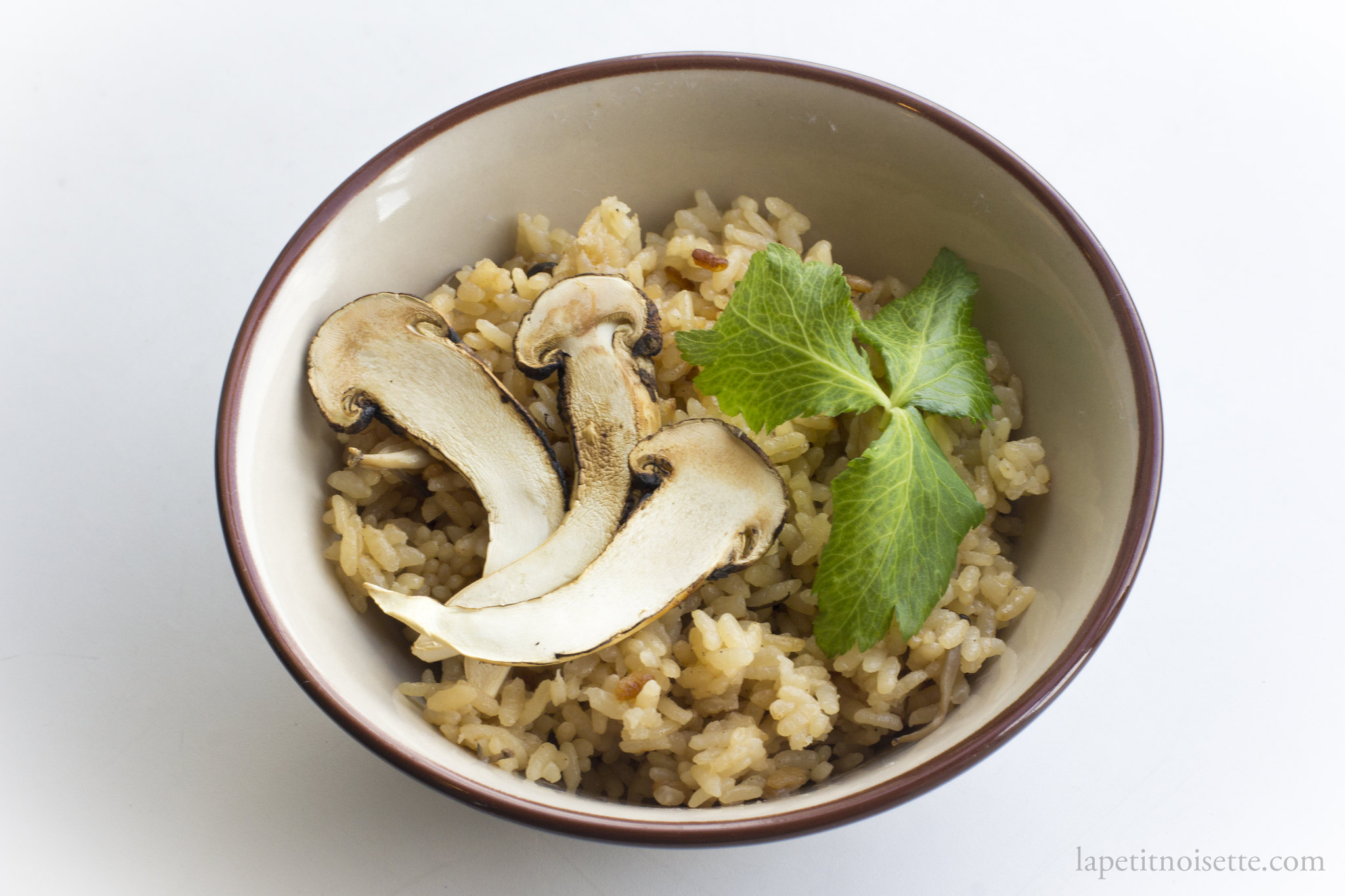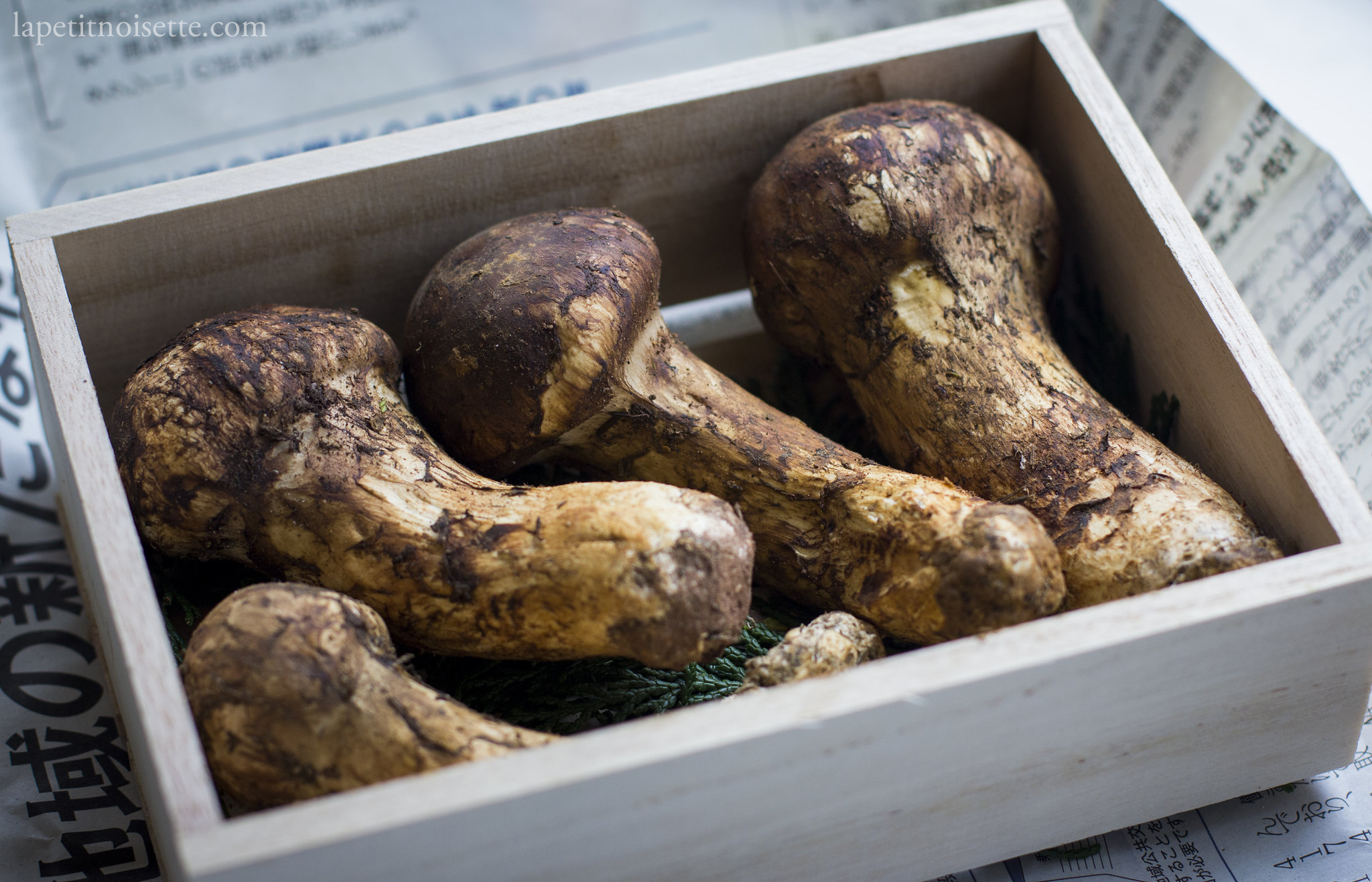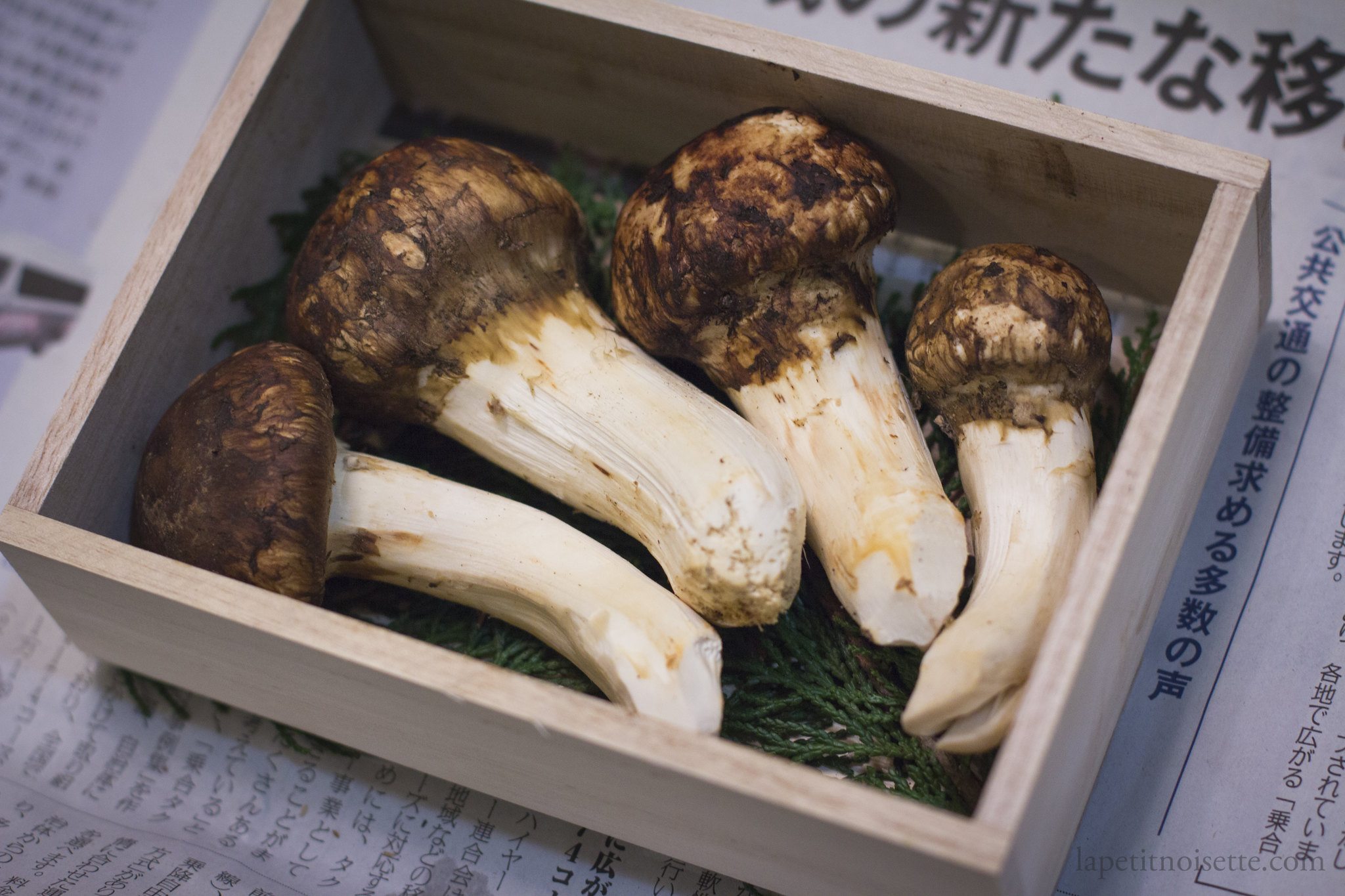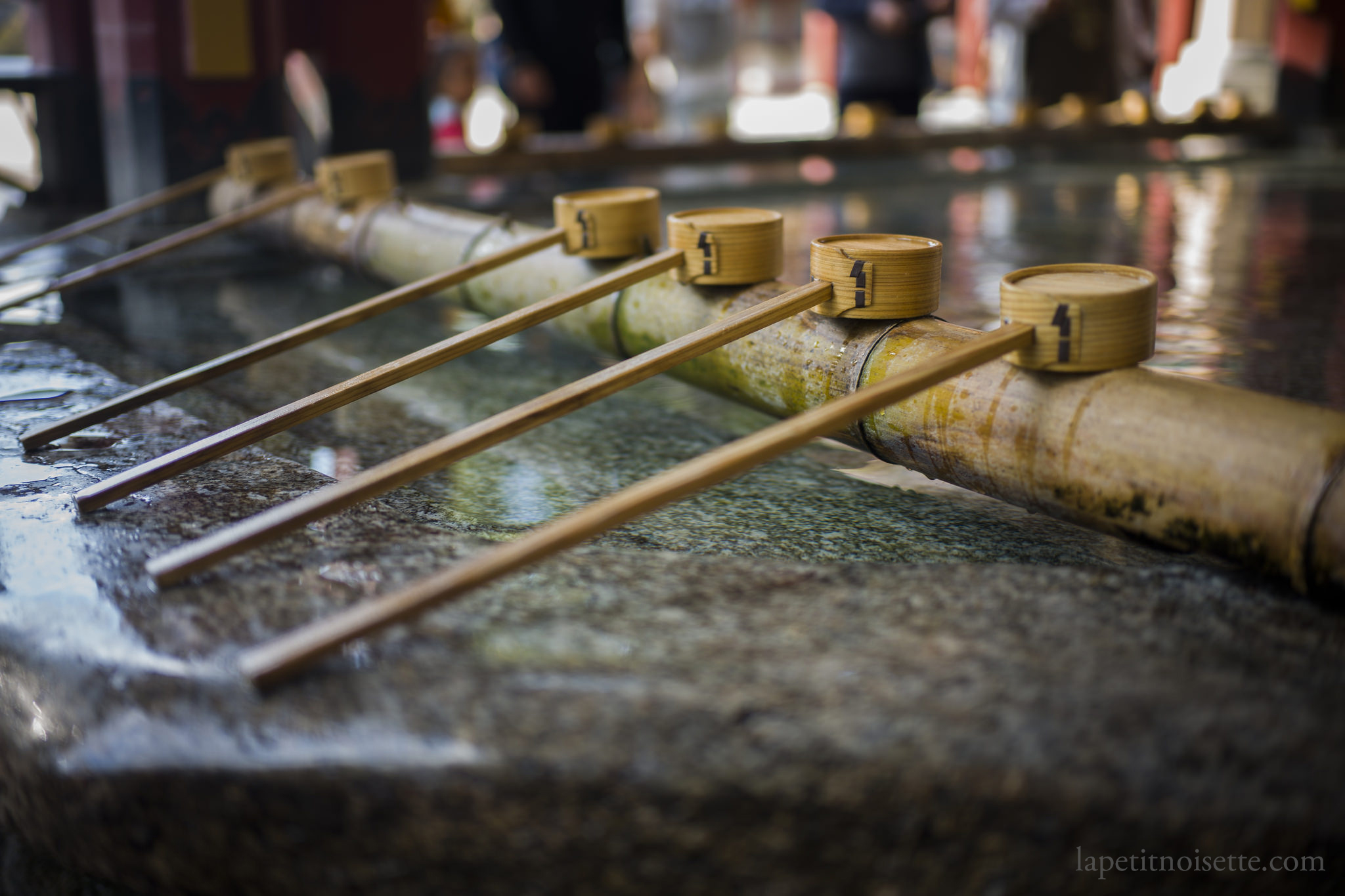
Probably the most prized mushroom and vegetable in the whole of Japan, the price of Matsutake mushrooms (松茸/Tricholoma matsutake) are only second to that of truffles, with locally foraged Matsutake mushrooms selling for up to 40 000 yen per kilo, or about 10 000 for a small box that you could buy at a high end supermarket. Interestingly enough, Matsutake mushrooms actually grow outside Japan in China, Korea and North America, where they are less sought after (which is probably why you’ve most likely never heard of them there before). In the same way that black truffles that are sourced from China are deemed to be lower quality, a lot of the Matsutake mushrooms that are foraged in China and the US are exported to Japan where they fetch a higher price, but still much lower compared to their Japanese counterpart at around 3000 yen for a small box of around 5 mushrooms.
The flavor of Matsutake mushrooms is not earthy like most prized mushrooms such as porcini or morels, but actually fresh and spicy, with a surprisingly crunchy texture even when boiled or steamed. Other than being grilled or fried in tempura batter as part of a multi-course kaiseki meal, the two most famous dishes that this mushrooms is used in is Matsutake Gohan, or mushroom rice, and dobin mushi (土瓶蒸し), which is a soup of Matsutake and gingko nuts cooked in dashi and served in a specially designed teapot.
Matsutake mushrooms begin appearing around Japan in September and October and can be found in the Japanese red pine (Pinus densiflora) undergrowth with which they grow symbiotically. Over the years however, the amount of Matsutake mushroom found in Japan has been decreasing gradually due to the reduction in the Japanese red pine population, furthermore, the harvest varies from year to year depending on the weather, with the price coming down during rainy years due to the increase harvest size. In the same way that porcini mushrooms are harvested before their caps open and they become “overripe”, Matsutake mushrooms are also harvested before their caps open. The main producing areas in Japan are Nagano (長野県), Iwate (岩手県) and Yamaguchi (山口県) prefectures.

Foraging and cleaning Matsutake mushroom
If you’re lucky enough to go forage for Matsutake mushrooms yourself, you probably should go with someone experienced and ask the person accompanying you for more information as they’ll be the most knowledgable on the subject. I cannot provide enough information here in one blog post that will help you identify them. At best if you make a mistake you’ll end up picking Tricholoma focale which is relatively harmless but at worst you might accidentally pick some Amanita smithiana, which will cause your kidneys to fail. In most western countries I’m aware of the debate between people who cut the base of the mushroom when harvesting them compared to gently twisting them off. In Japan however, Matsutake mushrooms tend to be exclusively gently twisted and pull away from the group, so that their appearance is appealing to be auctioned off.
Just like how you’d need to compete against the local wild boars and deers if you’re gonna try and harvest porcini mushrooms, the same goes for Matsutake mushrooms, and just like how you’d occasionally find overripe, insect eaten or almost rotting mushrooms, you’ll find the same here. If you are just shopping for them in the store however, this is worth keeping in mind because Japanese Matsutake mushrooms are so valuable that even if they’re worm infected, they can be sold at the same value as imported ones, and is possibly the most affordable way for you to try some domestic Matsutake mushrooms.
The most common worms that you’d find inside a them are the maggots of the Matsutake fly (Drosophila bizonata/マツタケチョウバエ) and the Futaobishojo fly (Psychodocha fungicola/フタオビショウジョウバエ), which disgusting as it sounds, is pretty acceptable to be sold at the supermarket. These mushrooms will be cut into halves or quarters by the store to display the internal damage caused to them by the worms, which you can see through the long holes they carve out and then sold at the appropriate reduced price. Most of the time the store themselves will have removed the worms for you, but if any worms do remain, remove them gently with a pair of tweezers. Please do not wash the Matsutake mushrooms underwater. Just like most mushrooms, they are highly absorbent of water and quickly lose their flavor if submerged. Some western chefs recommend a quick wash just to remove soil, even if it’s just washing the bottom tip of the mushroom. However, a much better way to clean the mushroom is to give them a wipe down with a damp kitchen towel and then a quick turn to remove any soil (just like how you’d turn a carrot in French cuisine).

Long term and short term Matsutake mushrooms storage
This is basically the same as any wild foraged mushroom, but just to summarize, moisture is your worse enemy as it’ll cause mold growth. If kept in the fridge, Matsutake mushrooms quickly lose their spicy fragrance so the fresher you consume them the better. They do last for 2 to 3 days in the fridge however, but are valuable enough to warrant being individually wrapped in kitchen paper to absorb any condensation on them that will cause mold growth.
How about long term storage, the Japanese do not have a tradition of dehydrating Matsutake mushrooms as you would morel or porcini because they are typically eaten for their crunchy texture and spicy aroma, both which do not preserve well compared to the deep earthy and musky aroma of morels and porcini mushrooms. There actually is no tradition of storing Matsutake mushrooms in Japan in anyway (that i’m aware off), but more recently there has been talk about the possibility of freezing them just as you would for porcini mushrooms, which is in thick pan-ready slices, provided you are going to grill them.
This is because defrosting them will give them a sad mushy texture, so instead, if you freeze Matsutake mushrooms, you’d want to transfer them immediately from the freezer straight onto a hot grill, so that the excess moisture will evaporate from the mushroom as it defrosts and cooks over the hot grill. I haven’t tried this myself, but people who have say that the texture is almost indistinguishable from fresh mushrooms. Bear in mind, this is not a Japanese technique, but a western one that has been adapted over.

Claypot Matsutake Gohan Recipe
*this recipe is for a claypot rice cooker which explain the measurement of rice in grams, but can be cooked in a rice cooker.
- 200g of matsutake mushrooms
- 540g of short grain japanese rice (~3 cups)
- 500g of dashi
- 45g of soy sauce
- 30g of mirin
- 30g of sake
- Mitsuba parsley (optional)
- Using a damp cloth, wipe away any dirt of excess soil off the stems of the Matsutake mushroom.
- Slice the mushrooms thinly using a sharp knife lengthwise, or to the thickness you prefer, the thicker the slices the more bite you get from the mushrooms but the less aromatic the rice. Alternatively, some restaurants use a mandolin to make slivers of mushrooms that they then use.
- Mix the dashi, soy sauce, mirin and sake together.
- Rinse the rice with water until the rice water runs clear, 2 to 3 times and then fully drain.
- Pour the rice and dashi mixture into the claypot.
- Finally add the Matsutake mushrooms on top of the uncooked rice. It does not need to be mixed in.
- Follow the rice cooking instructions for the individual donabe you are using. Alternatively, start with a medium heat until you can see steam coming from the stop of the donabe.
- At this point, switch off the heat and allow the rice to rest for 20 minutes before serving.
- To serve, mix the mushrooms into the rice and serve out individual portions garnished with mitsuba parsley.
If served in a traditional style, Japanese restaurants tend to make a great fanfare about cooking the rice, first presenting the the claypot to the guest, before dramatically opening the lid of the claypot to reveal the contents to the guest sitting at the counter (sometimes pictures are taken at this point). Afterwards, the claypot is returned to the back kitchen, the contents are mixed together, and the individual portions are served.